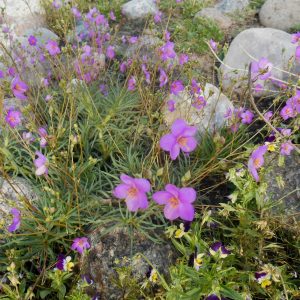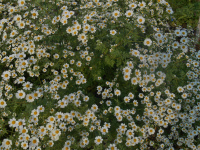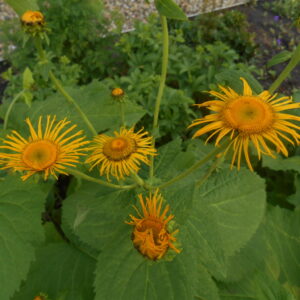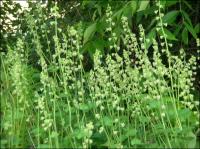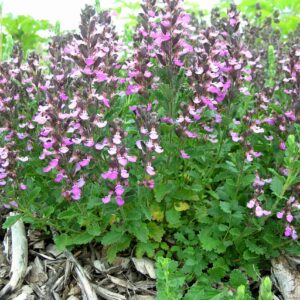Our Plants
Showing 537–544 of 587 results
-
Talinum calycinum syn. Phemeranthus calycinus Rock rose, Fameflower Z 6-9
Bright mauve flowers dance on wiry stems in afternoons all summer, closing at night. Leaves are succulent.
Tender reseeding perennial, but they survived the horrible winter of 2013-14. In any event they reseed reliably. Just watch for little succulent leaves.
Bright mauve flowers dance on wiry stems in afternoons all summer, closing at night. Leaves are succulent.
Size: 8-12” x 4”
Care: Sun in well-drained soil
Native: western Plains statesCollected by Dr. Frederick Wislizenus on sandy soil near the Cimarron River on an exploring trip of Texas, New Mexico and Mexico in 1846. Wislizenus (1810-1889) was a German immigrant, explorer, botanist, and medical partner of George Engelmann (1809-1884) important promoter of plant-hunting and expert on cacti and conifers.
-
Talinum paniculatum ‘Limon’ Jewels of Opar ANNUAL Succulent sub-shrub Z 9-11
Pink flowers bloom June-Nov. above lime green foliage followed by carmine seed pods that are more showy than the flowers.
Pink flowers bloom June-Nov. above lime green foliage followed by carmine seed pods that are more showy than the flowers.
Size: 18-24” x 18-24”
Care: sun in well-drained soil.
Native: Southern US, much of Latin America and the Caribbean.
Wildlife Value: attracts beesLeaves are edible as a salad green; seeds compared with flax seeds in nutritional value. According to homeopathy this used to treat headaches, aphrodisiacs, pneumonia, diarrhea, excess urine, irregular menstruation, vaginal discharge, impotence, ulcers and low appetite.
Collected before 1791
-
Tanacetum niveum Silver tansy, Snow tansy Z 5-9
Profusion of small classic daisies May-July atop fragrant silver foliage. Cut back for rebloom. Let the seeds drop for more plants next year. If you cut them back after the 1st flowering they will rebloom for most of the summer and fall.
Profusion of small classic daisies May-July atop fragrant silver foliage. Cut back for rebloom. Let the seeds drop for more plants next year. If you cut them back after the 1st flowering they will rebloom for most of the summer and fall.
Size: 2’ x 3’
Care: sun in moist well drained soil
Native: central & southern EuropeNamed by Carl Heinrich Schultz (1805-1867)
-
Telekia speciosa syn. Buphthalum speciosum Z 3-7
Big, sunflower-like blooms but with the thinnest of petals, deep yellow, with orange-yellow centers. Flowers June-July. Curtis’s Botanical Magazine 1836, “copious blooms.”
Big, sunflower-like blooms but with the thinnest of petals, deep yellow, with orange-yellow centers. Flowers June-July. Curtis’s Botanical Magazine 1836, “copious blooms.”
Size: 4-5’ x 2-3’
Care: sun to part shade in moist to moist well-drained soil
Native: mountains of southern EuropeGrown by Philip Miller in 1739, head gardener at London’s Chelsea Physic Garden, per 1836 Curtis’s Botanical Magazine.
-
Tellima grandiflora Fringecups Z 4-8
Pixie whitish fringed cups
OUT OF STOCK
Pixie whitish fringed cups bloom on 2′ tall panicle from May to July.
Size: 12"x 8"
Care: Part shade in moist well-drained to well-drained soil
Native: Pacific Northwest to AlaskaNitinaht Indians of Vancouver Island and Canadian Indians chewed this as a panacea and also to prevent a person from dreaming about necrophilia. The western Washington Skagit Indians took a mixture including pounded Fringecup to enhance appetite and to heal all ailments. 1st collected by Scotsman Archibald Menzies around 1790 on the Vancouver expedition. Introduced to gardens in 1826.
-
Teucrium chamaedrys Wall Germander Subshrub Z 5-9
Fragrant red-purple or bright rose flowers on this evergreen subshrub, July-September
Fragrant red-purple or bright rose flowers on this evergreen subshrub, July-September
Size: 1-2' x 12"
Care: sun in well-drained soil
Native: Caucasus MountainsTeucrium is named after Teucer, the 1st king of Troy. Chamaedrys means “ground oak” referring to foliage like miniature oak leaves. Grown in the Eichstätt Garden, the garden of Johann Konrad von Gemmingen, prince bishop of Eichstätt in Bavaria, c. 1600. Historically used to cure gout, fevers, and headaches, Grown in herb gardens and knot gardens. William Robinson: “useful edging plant, also good as a dwarf hedge.” Used as a hedge at Mount Vernon.
-
Teucrium hircanicum syn. T hyrcanicum Iranian germander, Purple Tails, Wood Sage Z 5-8
Loads of deep purple erect spikes from mid-summer through fall making this subshrub one of the best
Loads of deep purple erect spikes from mid-summer through fall making this subshrub one of the best
Size: 18-24” x 24”
Care: sun in moist well-drained to well-drained soil
Native: Caucausus and Iran
Wildlife Value: attract butterflies, deer resistantDescribed and named by 1753
-
Teucrium montanum Mountain germander, Creeping germander Z 5-8
Evergreen, narrow leaves covered with bouquets of flowers topped with a pair of upright, clasping petals streaked with burgundy, leading to a pair of open, white arms and a single, drooping white petal all resembling a snowman with a pointed red-streaked head blooming all summer on this spreading, cover-the-ground, drought-tolerant plant.
Evergreen, narrow leaves covered with bouquets of flowers topped with a pair of upright, clasping petals streaked with burgundy, leading to a pair of open, white arms and a single, drooping white petal all resembling a snowman with a pointed red-streaked head blooming all summer on this spreading, cover-the-ground, drought-tolerant plant.
Size: 10” x spreading
Care: sun in well-drained soil
Native: Spain across the Alps and east as far as TurkeyThe word teucrium believed to be named for Teucer, king in ancient Troy . He reputedly made medicine from teucrium. Known more than two centuries ago in ancient Greece and Rome

